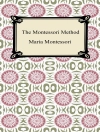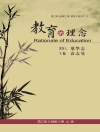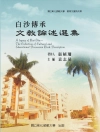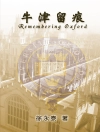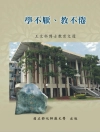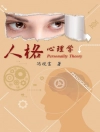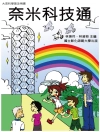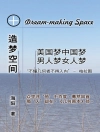Hands-On Science and Technology for Ontario, Grade 1 is an easy-to-use resource for teaching the five strands of the Ontario science and technology (2022) curriculum:
- STEM Skills and Connections
- Life Systems: Needs and Characteristics of Living Things
- Matter and Energy: Energy in Our Lives
- Structures and Mechanisms: Everyday Materials, Objects, and Structures
- Earth and Space Systems: Daily and Seasonal Changes
Hands-On Science and Technology for Ontario, Grade 1 encourages students’ natural curiosity about science and the world around them as they participate in hands-on activities and explore their environment. Using the inquiry approach, this comprehensive resource
- fosters students’ understanding of STEM (science, technology, engineering, and mathematics) skills
- makes coding and emerging technologies approachable for both teachers and students
- emphasizes personalized learning using a four-part instructional process: activate, action, consolidate and debrief, enhance
- relates science and technology to sustainability and our changing world, including society, the economy, and the environment
- focuses on practical applications of the engineering design process as students work on solutions to real-life problems
- builds understanding of Indigenous knowledge and perspectives specific to Ontario
- explores contributions to science and technology by people with diverse lived experiences
Using proven Hands-On features, this book provides resources for both teachers and students including background information on the science topics; complete, easy-to-follow lesson plans; materials lists; and digital image banks and reproducibles (find download instructions in the Appendix of the book).
Innovative elements developed specifically for the Ontario curriculum include the following:
- plugged and unplugged coding activities in nearly every lesson
- land-based learning activities
- opportunities for students to use guided research, hands-on inquiry, and the engineering design process
- a fully developed assessment plan to guide assessment for, as, and of learning
- ideas and prompts for STEM Makerspace projects
Jadual kandungan
Introduction to Hands-On Science and Technology for Ontario, Grade 1 1
- Introduction to Hands-On Science and Technology 2
- Program Introduction 2
- The Inquiry Approach to Science and Technology 2
- 21st Century Teaching and Learning 3
- The Goals of the Science and Technology Program 3
- Hands-On Science and Technology Strands and Expectations 4
- Hands-On Science and Technology Fundamental Concepts and Big Ideas 4
- Hands-On Science and Technology Program Principles 5
- Infusing Indigenous Perspectives 5
- Cultural Connections 7
- Land-Based Learning 7
- Technology 7
- Sustainability 7
- Program Implementation 8
- Program Resources 8
- Classroom Environment 11
- Planning Units—Timelines 12
- Classroom Management 12
- Classroom Safety 12
- Scientific Inquiry Skills: Guidelines for Teachers 12
- Observing 12
- Questioning 13
- Exploring 13
- Classifying 13
- Measuring 14
- Communicating, Analyzing, and Interpreting 14
- Predicting 15
- Inferring 15
- Inquiry Through Investigating and Experimenting 15
- Inquiry Through Research 16
- Online Considerations 17
- Addressing Students’ Early Literacy Needs 17
- Technological Problem Solving 17
- Makerspace 18
The Hands-On Science and Technology Assessment Plan 20
- Assessment for Learning 21
- Assessment as Learning 21
- Assessment of Learning 22
- Performance Assessment 23
- Portfolios 23
- Evidence of Student Achievement Levels for Evaluation 24
- Important Note to Teachers 24
- References 25
- Assessment Reproducibles 26
- Achievement Chart for Science & Technology 41
Unit 1: Needs and Characteristics of Living Things 43
- Introduction 44
- Unit Overview 47
- Curriculum Correlation 48
- Resources for Students 50
- Websites and Online Videos 52
- 1 What Do We Know About Living Things? 54
- 2 How Are Living and Nonliving Things Different? 59
- 3 What Parts Make Up the Human Body? 64
- 4 How Are Human Features Unique? 68
- 5 What Is Inside the Human Body? 72
- 6 What Do We Need to Eat to Stay Healthy? 77
- 7 What Do We Know About Our Five Senses? 81
- 8 Which Body Part Is Related to Each of the Five Senses? 87
- 9 How Do Our Senses Protect Us, and How Can We Protect Our Senses? 90
- 10 What Are the Needs of Living Things? 95
- 11 How Do Animals Meet Their Needs in Their Local Environments? 99
- 12 What Do Plants Need to Stay Alive and Healthy? 104
- 13 How Do Plants and Animals Work Together in the Environment? 108
- 14 How Do We Maintain a Healthy Environment for All Living Things? 112
- 15 Which Jobs and Hobbies Involve Plants and Animals? 119
- 16 Inquiry Project: What More Do We Want to Know About Plants or Animals? 123
Unit 2: Materials, Objects, and Everyday Structures 127
- Introduction 128
- Unit Overview 131
- Curriculum Correlation 132
- Resources for Students 133
- Websites and Online Videos 134
- 1 What Do We Know About Objects and Materials? 135
- 2 How Can We Describe Objects and Materials? 140
- 3 How Can We Sort Objects and Materials? 144
- 4 Why Are Some Materials Better Than Others for Certain Jobs? 148
- 5 How Can Different Materials Be Used to Construct Objects? 153
- 6 How Do We Decide Which Materials Are Best to Do a Job? 157
- 7 Why Is It Important to Choose the Right Material for the Job? 162
- 8 What Kinds of Waste Do We Produce in the Classroom? 166
- 9 How Can We Build Objects With Recycled Materials? 170
- 10 What Can We Learn About Structures in the School? 174
- 11 What Can We Learn About Natural Structures? 178
- 12 Inquiry Project: How Can We Make a Model Playground? 181
Unit 3: Energy in Our Lives 185
- Introduction 186
- Unit Overview 189
- Curriculum Correlation 190
- Resources for Students 191
- Websites and Online Videos 192
- 1 What Do We Know About Energy? 194
- 2 How Do We Know We Get Energy From the Sun? 199
- 3 How Do Living Things Get Energy? 203
- 4 What Are Some Everyday Uses of Energy? 208
- 5 How Do We Use Energy Safely? 213
- 6 What Happens When Energy Is Lost? 218
- 7 How Can We Save Electricity? 221
- 8 How Do We Use Energy Throughout the Seasons? 224
- 9 Inquiry Project: How Can We Design and Build Devices That Use Energy? 228
Unit 4: Daily and Seasonal Changes 233
- Introduction 234
- Unit Overview 237
- Curriculum Correlation 238
- Resources for Students 239
- Websites and Online Videos 241
- 1 What Do We Already Know About Daily and Seasonal Changes? 243
- 2 How Do We Put Events in a Sequence? 249
- 3 Is There a Sequence to Our Daily Activities? 254
- 4 What Are Some Differences Between Day and Night? 258
- 5 What Are Our Weekly Routines? 264
- 6 How Are the Months of the Year the Same and Different? 268
- 7 How Do We Know the Sun Gives Us Heat? 273
- 8 How Does the Size of Our Shadow Change Throughout the Day? 278
- 9 How Does the Temperature Change Throughout the Day? 283
- 10 How Do Seasonal Changes Affect Plants? 287
- 11 What Is a Good Design for a Bird Feeder? 293
- 12 Which Activities Do People Do During Different Seasons? 297
- 13 Which Characteristics of Shelters Make Them Safe Throughout the Seasons? 301
- 14 Inquiry Project: How Do Seasonal Changes Affect Animals? 305
- References 309
Appendix: Image Banks 311
About the Contributors 322
Mengenai Pengarang
Jennifer H. Manitowabi (she/her/hers) is an Ojibway educator and Ph D student at Lakehead University. Throughout her career in education in both Canada and the US, she has worked as a bus driver, classroom teacher, principal, and education director. Jennifer encourages all teachers to incorporate Indigenous worldviews into their lessons and find opportunities to build relationships with the First Nations of Turtle Island. Jennifer is a member of Lac Seul First Nation, where she currently resides, and can often be found creating artwork that celebrates her culture.


